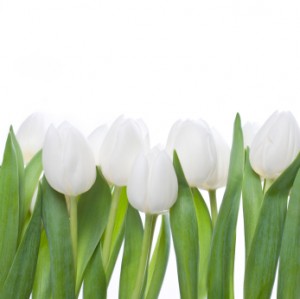 One way to make the impact of climate change more real is to participate in gathering scientific data about it. Everyone (including children) can participate in NatureWatch, a series of volunteer monitoring programs sponsored by the Environment Canada, Nature Canada, the Trillium Foundation, Ontario Parks, among others.
One way to make the impact of climate change more real is to participate in gathering scientific data about it. Everyone (including children) can participate in NatureWatch, a series of volunteer monitoring programs sponsored by the Environment Canada, Nature Canada, the Trillium Foundation, Ontario Parks, among others.
By providing data that fills geographical gaps in knowledge about many species, each of us can assist scientists to monitor how our environment is changing. Two of the most important volunteer programs take place every spring.
PlantWatch
PlantWatch, a joint venture between Nature Canada and Environment Canada, evolved from the Alberta Wildflower Survey, which began in 1987.The 39 plants selected for observation across Canada bloom each spring, in large part due to increasing temperatures.By reporting blooming dates, citizens can help scientists gather data on how these plants respond to climate change.Of note, some species now flower nearly a month earlier than they did 100 years ago.
The PlantWatch website provides helpful instructions on how to monitor and observe plants as well as photographs and information about each plants to be monitored:
Site selection: Choose an area where specimens grow in an accessible area, preferably on level ground and away from sites that have abnormal temperature or light conditions (e.g., streetlights, concrete foundations, paved areas). Temporarily tag trees and large shrubs; for smaller plants, find a patch of the species. If possible, label the plant or patch with tags to ensure the same plants are observed at each visit, and from year to year.
Observation: Start to watch the plants in the spring, checking for signs of impending blooms, such as swelling flower buds. Visit the site every day to ensure the first day of leafout or blooming is accurately recorded.
Recording and reporting: Observers must register, providing their names and contact information. On the data sheet provided (available on the website), note the latitude and longitude of plant locations and the date when the plant reaches first bloom (this is clearly defined for individual flowers, shrubs or trees and patches). Provide additional information, like weather and insects affecting the plants. Also, report the date the plants reach mid-bloom (this may differ among species) and leafing dates for tree species.
IceWatch
Changes in the timing of freezing and thawing of the ice cover of lakes and rivers can impact the ecosystem, for example by altering bird migration patterns and breeding seasons, and affecting food supplies for fish and animals. IceWatch volunteers record natural ice events in fresh water (e.g., in lakes and rivers). Again, the associated website provides helpful instructions on how to monitor natural freeze-thaw events:
Site selection: Not all waterbodies are appropriate; for example, long thin lakes that are parallel to prevailing winds are influenced by air movement, and lakes and rivers controlled by dams are affected by upstream water controls.
Observation point: Use the same observation point every season, over the years. It should be easy to find (even for subsequent volunteers) and a site with a view of all or most of a lake surface, or an identifiable part of the lake surface, is preferred. For rivers, observers should select a site from which they can see a reasonably straight stretch of gently flowing river. On lakes and rivers, sites should be unaffected by human activities (e.g., dams, sewage, industry, agriculture).
Recording and reporting: Two dates should be recorded:
- ice-on – the date the ice completely covers the body of water and remains intact for the winter (fall freeze);
- ice–off – the date the ice completely disappears from the water body (spring thaw).
During the freeze/thaw periods, daily observations are required to ensure the accuracy of these two dates. Observers are encouraged to provide information on the first date the ice completely covers the water body (even if it later melts); and the first date the ice disappears (even if it returns with more cold weather).
As with PlantWatch, observers must register on the NatureWatch site and provide observations (including freeze/thaw dates, as well as latitude and longitude coordinates) on the downloadable IceWatch form. More detailed submissions are welcome, and it is important to record if the water body does not freeze over at all.
The site also provides maps and graphs detailing IceWatch observations (and freeze/thaw trends) over the years, from across Canada. One report notes that records from IceWatch, the Meteorological Service of Canada, and Canadian Ice Service date from as early as 1822.
Other programs include FrogWatch (where one identifies frogs and toads by sight and by listening for their calls; salamander sightings may be reported, too) and WormWatch (monitoring earthworm population and species diversity). Additional reporting programs are ButterflyWatch and NatureBASICS. The latter program is very simple to follow and helps individuals begin their observation activities, by reporting on 6 species: 2 plants, 2 butterfly, a toad and frog.
By carefully observing our own neighborhoods, and pooling what we learn, citizen scientists can make powerful contributions to Canada’s understanding of climate change. We may also learn enough to protect the areas we most love, for our children’s sake, and our own.
Government of Canada. Changes in lake ice signal a changing climate (2008). From http://www.naturewatch.ca/english/icewatch/changes_in_lake_ice_signal_a_changing_climate.pdf
